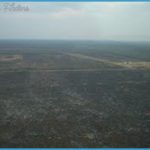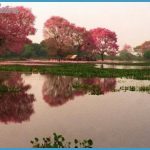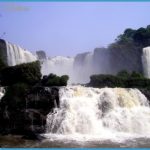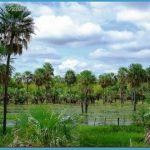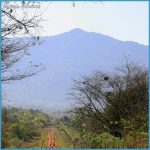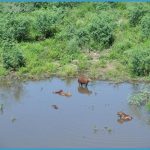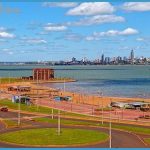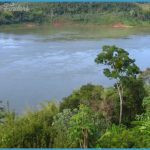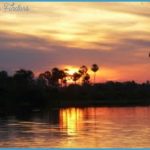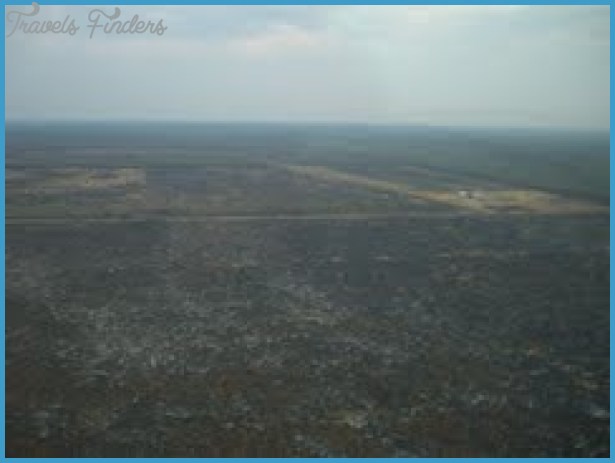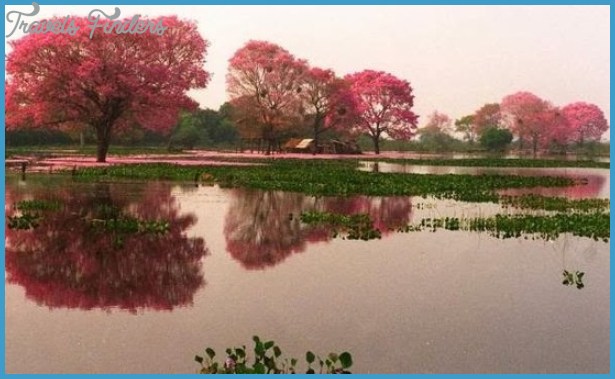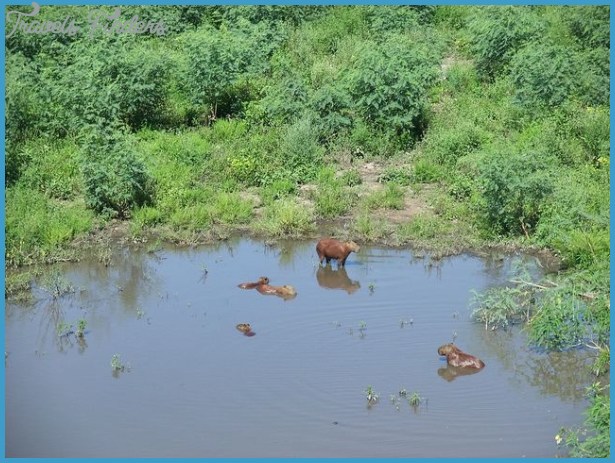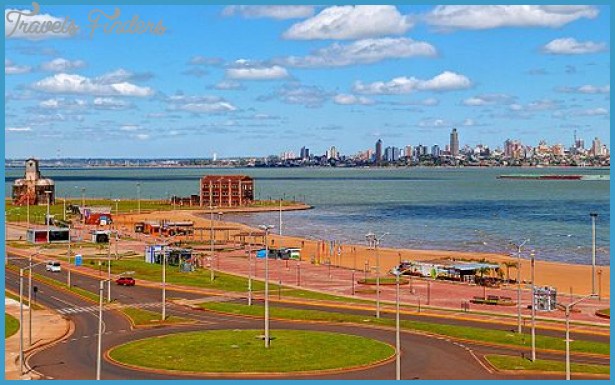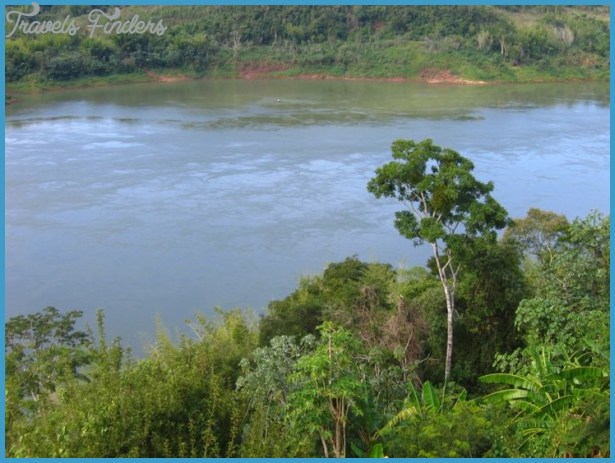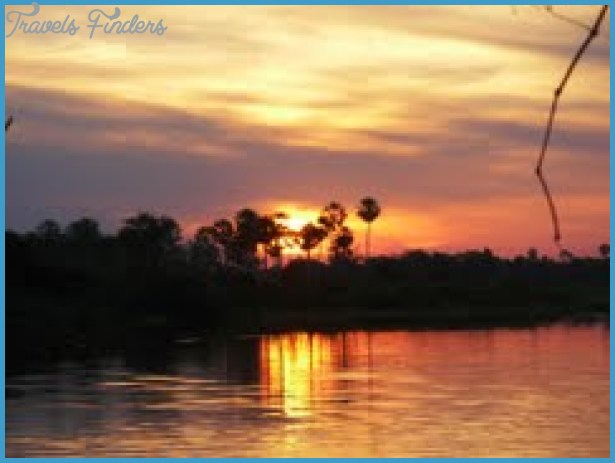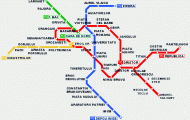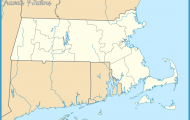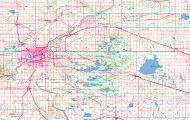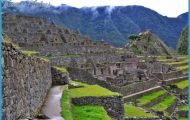Located in the very heart of South America, the Pantanal is the largest freshwater wetland in the world. Extending over a large portion of Brazil, as well as Bolivia and Paraguay, the Pantanal is over
140,000 square kilometers in size. The southernmost extension of the Pantanal is located within the Upper Paraguay River Basin which empties into the Paraguay River. Encompassing most of the department of Alto Paraguay, this is the country’s least populated and most biologically rich area, home to hundreds of species of flora and fauna. The best towns along the river from which to experience the beauty of the Paraguayan Pantanal are Fuerte Olimpo (capital of the department of Alto Paraguay) and Bahia Negra, the country’s northernmost town. Both are accessible by riverboat, bus, and airplane although the last two are highly subject to weather conditions during the rainy season (October to March). The Aquidaban boat (see Lancha Aquidaban) is the most dependable mode of transportation, but also slowest.
Alto Paraguay is one of Paraguay’s poorest and most remote regions with very little in the way of tourism infrastructure. Expect to be roughing it unless you pay for a private guided tour and transportation. Despite these setbacks, the incredible concentration of flora and fauna, coupled with the scarcity of commercialized tour operations makes a trip to the Paraguayan Pantanal a rewarding adventure and a must for any nature lover (especially bird watchers).
Lying at a lower elevation than surrounding areas, the Pantanal is a large alluvial plane throughout which a wide variety of ecological sub-regions are found. During rainy season up to 80 percent of the region is flooded. The Pantanal functions as a huge sponge soaking up rain water. This absorbing action causes an important buffering effect that protects the southern regions of both the Paraguay and Parana Rivers from flooding. The rainy season’s elevated water levels in the north can take up to six months to arrive downriver. The name Pantanal comes from pantano, the Spanish and Portuguese word for swamp, though during the dry season the water recedes and the marshlands turn into grass-covered savannahs.
The Pantanal is home to hundreds of birds species and is a popular stopover for migrating flocks. With its distinctive black head, red collar, and enormous white body, the jaibiru is the world’s largest stork and the easiest bird to spot. The enormous flocks of jaibiru that gather along the river and inland lagoons are truly an amazing sight to see, but even the sight of a single jaibiru, is likely to make your day. The jaibiru (or tuyuyu in Guarani meaning swollen neck) is endearingly awkward on land but graceful once it is in the air.
Caimans, or yacares, are the most prevalent aquatic animals, present in the thousands (see How to Spot a Yacare). Capybaras, the world’s largest rodents, can also be seen swimming in the river, ducking back and forth along the camalotes making use of their large webbed feet. Rarer still are giant river otters which make their nests along the river banks. The river is home to over 263 fish species, the most well-known include suruM, pacu, pintado, dorado, and piranha (see Fishing in the Paraguay River).
The area’s larger animals, including the marsh deer (ciervo de los pantanos), giant anteater and tapirs, are harder, but not impossible, to spot. A combination of experienced guides, patience, and a little luck will increase your chances of seeing them. Most elusive (and prized by poachers) are the jaguars and pumas.

